Most drivers don’t know the rules. And you?
How well do you know traffic rules? Remember the rules that few people remember.

You ever read the Rules of the road to the end? All the rules you remember and understand? Surely most motorists last read them while studying in the driving school before the exams in the traffic police. But even if you consider yourself to be drivers who from time to time read SDA, not to forget, you still hardly know them fully. After all, to remember them is impossible. We will take you through some highlights, which, unfortunately, baffled many drivers.
If you think that every driver is sufficient from time to time to watch traffic, refreshing your memory, you are mistaken. Unfortunately, the Rules of the road in Russia is quite complicated and many of the items have an unclear meaning and unclear, and often can conflict with some existing laws.
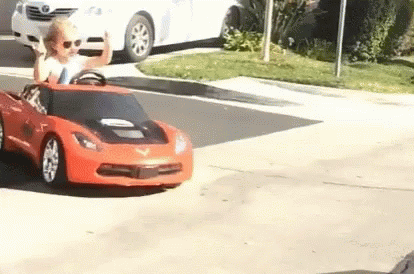 But that’s not all. Every year in the SDA are made different changes, resulting in cease to operate some items of traffic rules or new rules. Sometimes it happens that the new rules are introduced, eliminate existing ones, or Vice versa. In this case, even the professionals in the field of road law, faced with problems of interpretation of many innovations in the SDA.
But that’s not all. Every year in the SDA are made different changes, resulting in cease to operate some items of traffic rules or new rules. Sometimes it happens that the new rules are introduced, eliminate existing ones, or Vice versa. In this case, even the professionals in the field of road law, faced with problems of interpretation of many innovations in the SDA.
So, we decided to collect provisions of the Rules of the road that most drivers either forget or do not know. Here are some of them.
1. In some cases you can transport your child without a child seat?

It would seem that this has already been said enough. One time, many media widely covered the topic of changes in the rules of transportation of children in cars. And I must admit that after making changes in the legislation have become clearer. But not so simple.
For example, many drivers wonder whether it is possible to carry a third child in car without car seat, if the third holding device cannot be installed? Also many drivers are interested in whether you can carry children up to 12 years without a seat on the third row of seats?
But most of all, questions arise about car seats and child restraints. Unfortunately, not all car owners can afford to buy a full child seat. Alas, nowadays they are very expensive. However, in this case, of course, better to look for used seats, which sometimes really can be purchased very cheap. But do not forget that every car seat has its own service life. Especially pay attention to the condition of car seats. For example, if the car seat was installed in the car that got into an accident, it is possible that this safety device has pinholes. These products are not worth buying.
So, check yourself, do you know thoroughly the rules regarding the transportation of children.
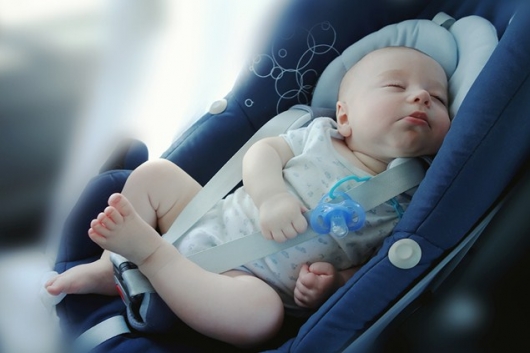
Recall that in 2017 Russia introduced new rules of transportation of children, which is regulated by RF Government Resolution No. 761 of 28 June 2017.
From this point, when the transportation of children is prohibited the use of various adapters (for example, special devices are installed on the seat belt, allowing to fasten the child in the car without using car seats).
So, here are the basic rules of transportation of children:
How to transport in the car children under the age of 7?
Recall that all child car seats are divided into categories and groups according to the age and weight of the child. When transporting children, you need to use a car seat strictly defined category corresponding to the parameters of your child.
Car seats and child restraints are allowed to install both on the front and on the back seat. Including the third row of seats.
Children under 7 years without a child restraint is prohibited. Otherwise, the driver will be fined in the amount of 3 000 rubles. Including do not forget that you can’t leave a child under 7 years of age in the vehicle absence in the cabin of adult people.
How to carry in the car for children aged 7 to 12 years?
When transporting children aged 7 to 12 years, the obligation to use a child restraint according to the current legislation applies only to transport children on the front seat. If you are transporting children in the back seat, the child restraint can be used if desired. According to the law in 2017 when transporting children aged 7 to 12 years in the absence of a child restraint device, you must fasten them to the vehicle’s seat belts.
In the end, the fare for children over 6 years old in the back seat without a car seat, the fine is not threatened. But remember that in the front seat to transport children without a child seat or the carrycot can not (under 12 years).
But despite the lack of penalty for transportation of children without seats in the back seat over the age of 6 years, we still do not encourage drivers to rely on some regular seat belts. See all on the situation.
If the child is large enough, then you can do not use for transportation in the back seat baby seat. In a pinch, can use a booster.
If the complexion of the child can not effectively fasten the child safety belt, in this case we recommend to use still child seat.
In some cases, without seat can carry a child of any age?

Under current law there are instances in which drivers are still allowed to transport children of any age without the use of child restraint devices. We are talking about those children, the growth of which exceeds 150 cm or more having a weight of 36 kg.
How can I carry my baby in the car, if it has no mounts for child seats and seat belts?

Yes, despite the fact that we live in the 21st century, sometimes we are asked such questions. Usually they concern a cargo of old machines (with two rows of seats) where you really may be missing seat belts and hardware for child restraints.
First, once again we will remind what to transport children without car seats prohibited to 7 years. From 7 to 12 years child can be transported in the back rows of seats just buckled in a regular seat belt.
Secondly, once again I want to warn those who go on the offense, carrying children in cars not equipped with seat belts. You think, is it possible to put a child in a car?
Can I carry a third child in the car without a seat?
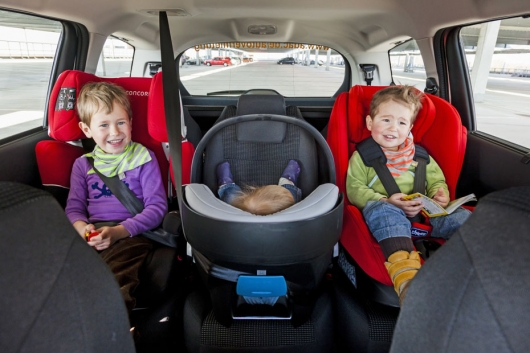
It all depends on the age of the child. If all three children under the age of 7 years, you are required to transport them use the three restraints. That is the law no exceptions for the third, etc. child. Also, there is no exception and for the third, fourth, etc. rows of seats.
If your children are different ages and there are those who have more than 7 years, you can some children be transported in car seats and other carry in the car in the back seat, buckling the regular seat belt. Can also use booster.
2. The green arrow in additional section of traffic lights with a burning main red: how to get
Also, not all drivers remember how to drive through intersections with traffic lights equipped with an additional section (arrow). Recall that the additional section of the traffic light (arrow) is responsible for regulating traffic at the intersection when turning left or right.
Many drivers often confuse the rules of access to such intersections. Especially when it comes to burning mostly red light in a pair of burning green arrow permitting the turn. This is especially difficult for novice drivers who forget that green arrow does not mean that you can freely turn right or left.
The fact is that if you approached an intersection where the traffic signal indicates the prohibition of traffic (solid red), and the additional section of the traffic light (arrow) indicates, for example, to the right, you should be guided by clause 13.5 of the SDA:
13.5. When moving in the direction of the arrow included in additional section simultaneously with a yellow or red traffic signal, the driver shall give way to vehicles travelling from other directions.
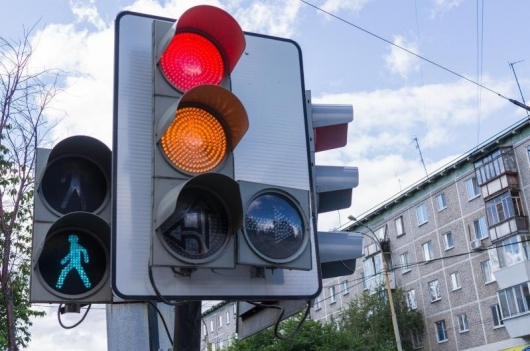
That is, in fact, the combination of the red signal of a traffic light with an extra arrow to the right equivalent when driving right to the sign “Give way”.
By the way, in such places the crews of traffic police like to ambush, catching inattentive or hurrying drivers. Recall that means “give way”.
According to the current legislation to give way you should so as not to interfere with other vehicles to move. In fact, to give way, not interfering, it can only be in two ways: you don’t have to move (if standing) or should not continue (in this case, you need to stop to allow other vehicles).
If the result of your maneuvers when driving turning on the green arrow at the burning main stoplight you will prevent the movement of other vehicles (they will change the trajectory or reduce the speed), you will violate existing traffic regulations. It provides for administrative liability in accordance with part 2 of article 12.13 of the administrative code of the Russian Federation – a fine of 1000 rubles.
By the way, very often it happens that right after the turn at the intersection is an unregulated pedestrian crossing and merging roads with a Bicycle path. Remember that when you turn the signal green arrow you must yield to pedestrians and cyclists. Otherwise you will be fined in the amount of 1500 rubles in accordance with article 12.18 of the Cao RF.
3. When the speed limit?
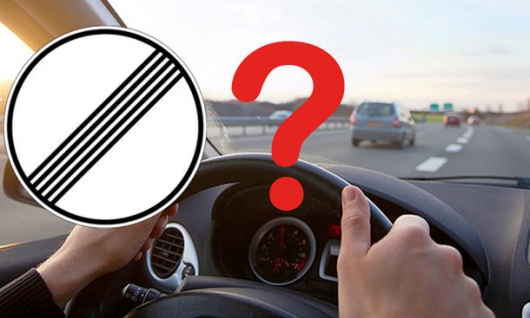
Do you know when it starts and ends with the speed limit on the road? Unfortunately, many drivers don’t remember that. It all depends on where is the sign limiting the maximum speed, and the presence of other signs.
For example, if a speed limit sign there’s a sign with a number (say, 500), this means that the speed limit applies 500 metres from the speed limit sign.
It should be noted that in the absence of specifying the distance at which to enforce the speed limit, it applies to the sign “End of speed limit”. Those who do not remember, here’s how it looks:
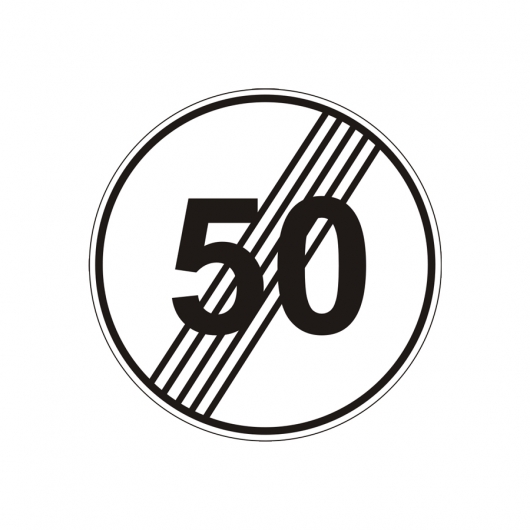
But it is not only a sign of repealing the maximum speed limit, installed traffic sign. There is another sign of the “End of all restrictions”, which also cancels the previously set speed limit. Here’s how it looks:

Additionally, under the current Rules of the road sign “speed Limit” is canceled in the following cases:
Sign “speed Limit” means another of the same sign (for example, if first on the road is a speed limit sign of 40 km/hour, and then 50 km/HR, then the previous sign speed limit 40 km/h is no longer valid. In this case, you must follow the instruction of the last road sign, limiting the speed).
If a speed limit sign there are no information boards on the area of the restrictions and on the road no signs of lifting the restrictions, the traffic sign, limiting the maximum speed, operates to the nearest intersection or locality.
Many people ask whether the circular motion of the intersection. Yes, it is a complete intersection, which abolishes the speed limit applicable to a circle.
That does not negate a speed limit sign?
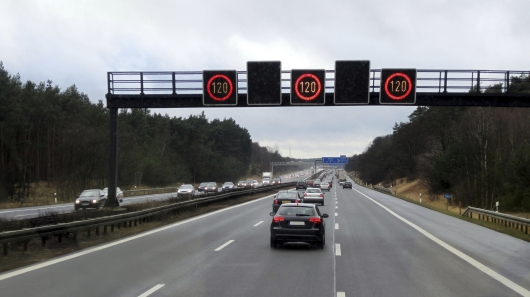
Also every driver should know by heart, in which cases the speed limit on the road is not canceled. Here is a list of such cases:
- Sign “speed Limit” is not canceled crosswalk
- A turn of the road, where there is no intersection
- If the light is not on crossroads and is intended for crossing pedestrians
- Also not cancel the speed limit sign “Main road”, if he stands not before a crossroads
- Including not override the maximum speed limit flyovers, bridges and tunnels
4. Parking on the sidewalk is not for everyone
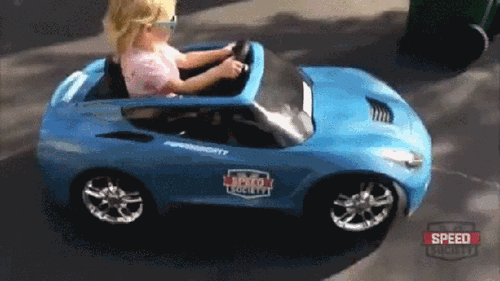
According to the rules in some cases, cars are allowed to Park on the sidewalk two wheels. Recall that, in General, Parking on pavements is allowed only with proper signs-signs 8.6.2-8.6.9 combined with the sign of 6.4 “Parking” (Parking space). Here’s how they look:
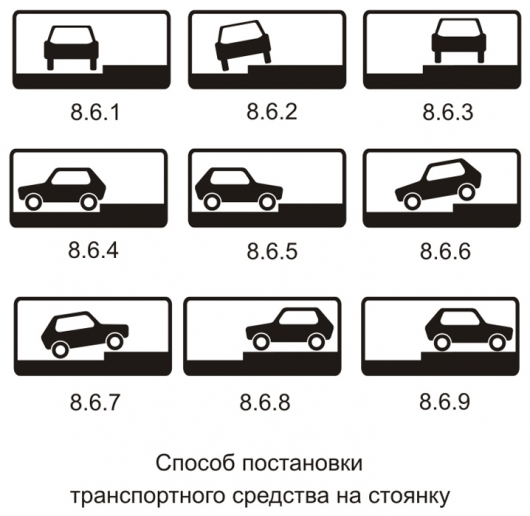
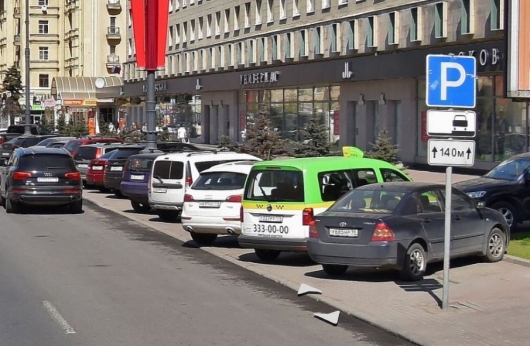
But not so simple. The fact that in this way on the sidewalk can only Park cars, mopeds and motorcycles. Trucks Parking on the sidewalk even two wheels is prohibited.
By the way, this applies to off-road pickup trucks with capacity over 1000 kg, which according to the Russian legislation related to heavy goods vehicles (category C).
In some cases, you can Park your car on the sidewalk without permitting the tablets?

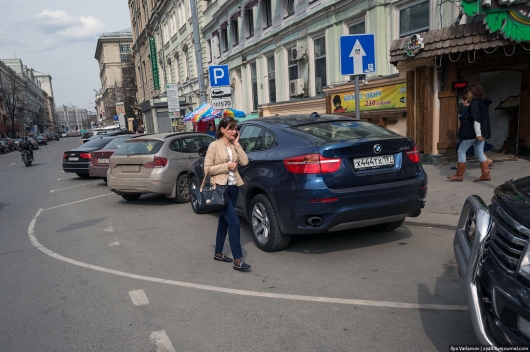
In case of technical malfunction or any other hazardous events drivers are permitted to Park on the sidewalk even in the absence of this permissive traffic signs. However, if you will approach the traffic police, you will have to provide strong arguments and evidence justifying the legality of your Parking.
5. What you can and cannot do to the driver in a residential area?
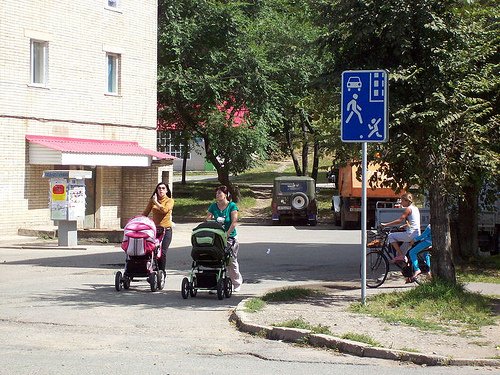
You know the road sign “Residential zone”? Here’s how it looks:
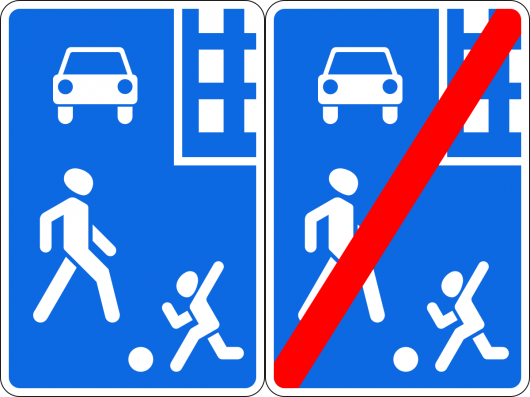
As you know, the left sign means that began a residential area, on the right – sign, canceling a residential area. But do you know the rules of the road in a residential area? Did you know that most of the yards near the house are also included in the residential zone, in accordance with the SDA? So, the restriction of movement in the living area extends to the yard areas. We already have discussed in detail this issue in our article “Winter traffic fines: do you know what they can get?”, where told, why not warm the car for more than 5 minutes in the yards of residential houses (in the same way as in the area of the sign “Residential zone”). Read more about this you can read here.
But what the driver should do, stopping in the living area, indicated with a road sign and even in the absence of such a sign in a residential yard areas?
First, let us remember that such living area:
Residential area – regional area in the village used to host residential buildings, objects of social and household purpose, objects of health care, education, motor transport Parking services, garages and other facilities associated with the accommodation of citizens (paragraph 5 of article 85 ZK the Russian Federation).
Residential area according to the traffic Regulations of the Russian Federation (section 17) – the territory, the entrances and exits which are marked with road signs 5.21 “Residential zone” and 5.22 “End of residential area” and in which there are requirements of traffic Regulations of the Russian Federation, establishing the procedure for movement in a residential area.
The requirements of section 17 of the SDA of the Russian Federation shall also apply to yard areas (paragraph 17.4 of traffic regulations).
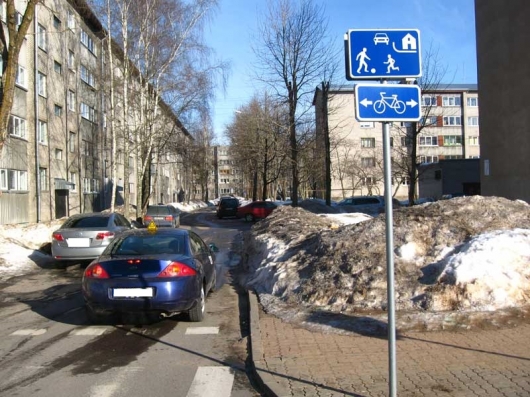
That’s what require the SDA to do in a residential area (including courtyards):
– In a residential zone pedestrians have advantage (though it should be noted that SDA clearly obliges pedestrians do not create unreasonable hindrances for the movement of cars). By the way, pedestrians in the residential area have a right to move not only along the pavement but in the road.
– In a residential area is prohibited through traffic of cars.
– In the residential zone are also prohibited from riding training.
Including prohibited Parking the car with the engine running (recall that the Parking of a vehicle – this is a stop not more than 5 minutes).
– Also in a residential zone prohibited Parking of trucks with a permissible maximum weight exceeding 3.5 t (outside the designated places and designated by signs and (or) marking places).
– Attention! Upon departure from the residential zone under clause 17.3 of the traffic regulations drivers must give way to other road users.
